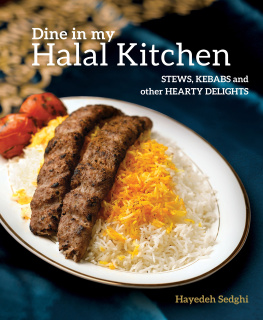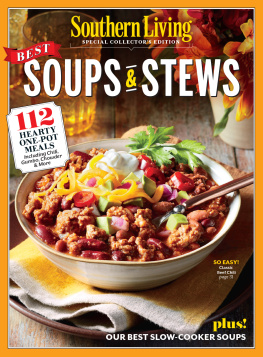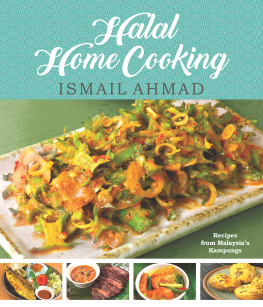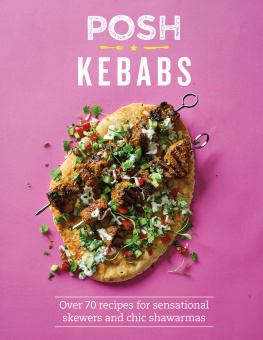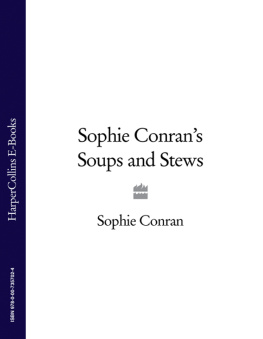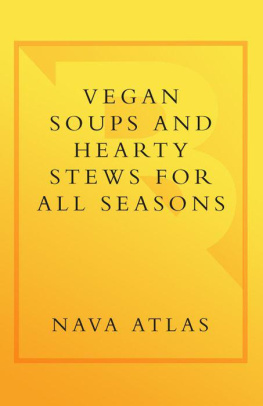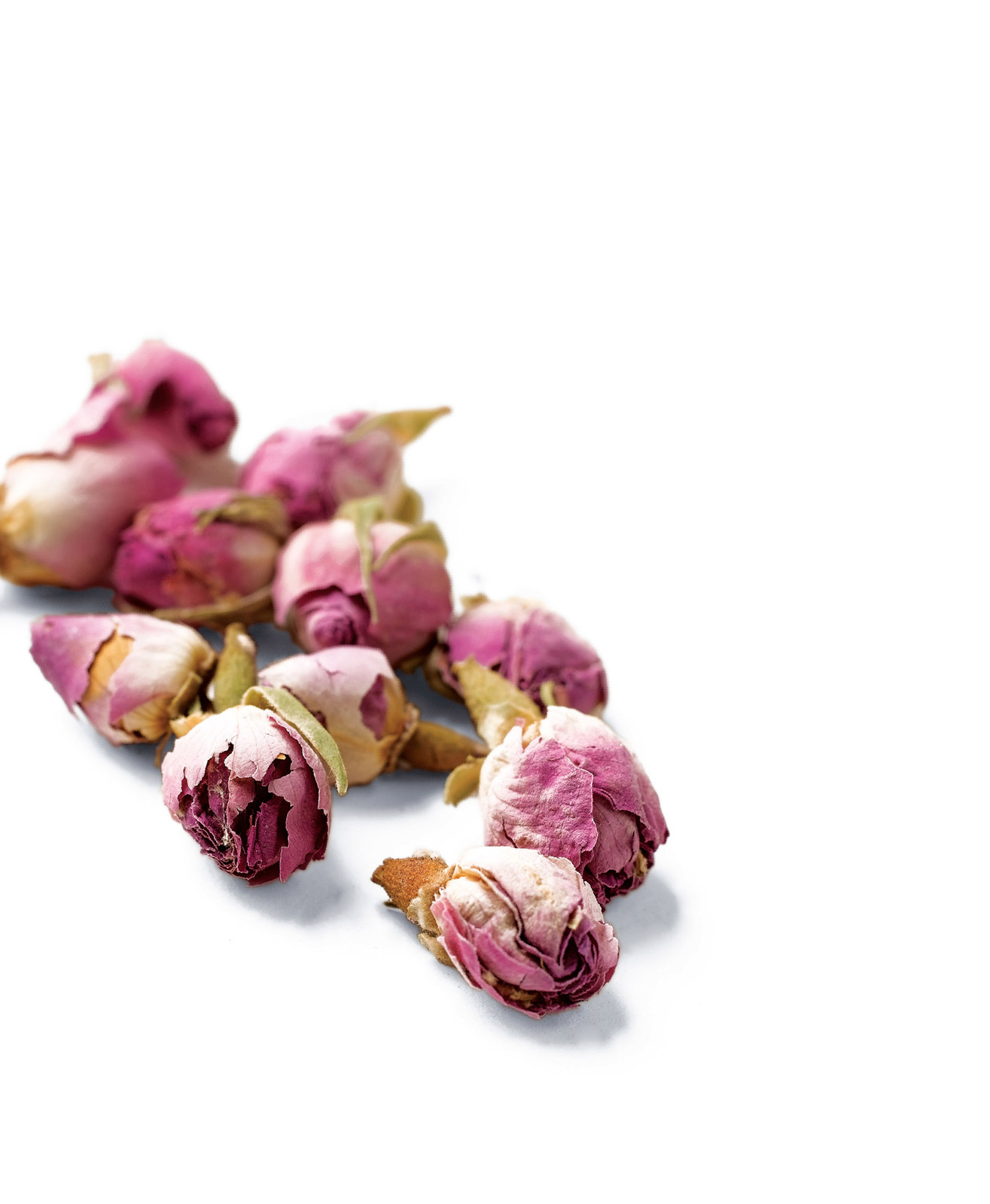Contents
Dine in my Halal Kitchen
Dine in my
Halal Kitchen
STEWS, KEBABS and
other HEARTY DELIGHTS
Hayedeh Sedghi
Contents
Introduction
Iranian cooking can be done using simple cooking utensils, such as medium to
large pots, stew and frying pans, wooden spoons, a masher, and so on. Nothing out
of the ordinary, except for the flat kebab skewers that resemble long swords with
no handles. Nevertheless, there are ways around them. The cooking techniques
are similarly uncomplicated but require time and skills of assessment. Such skills
traditionally come with experience gathered from daily practice, but this book aims
to fast-track the learning process a little for its readers through the use of step-by
step photographs.
Because many of these dishes are characterised by slow-cooking, patience is a
virtue in the kitchen. Be sure you have ample time, at least 2 hours, before deciding
to prepare an Iranian mealtypically consisting of plain rice or a rice dish, a stew or
two and a fresh salad, with yoghurt-based accompaniments and pickles often
on the side. A soup is in order if serving only one stew, otherwise, two stews are
more common.
All recipes in this book make 4 servings if you follow the meal plan above.
Otherwise, any of the rice dishes, excluding plain rice, will easily make a one-dish
meal for 23 people. Although it takes 23 hours to prepare, an Iranian meal is worth
every effort once it is placed on the table or sofreha large rectangular piece of
embroidered cloth that traditional Iranians unfold and lay on the floor at mealtimes,
and diners would sit along the two long sides after the spread of food has been
placed along the centre.
Cooking Techniques
Grilling (Broiling)
The technique of grilling skewered meat, whether lamb, beef or chicken, is an art
form. Getting the kebab right is no mean feat, from how the meat is lovingly kneaded
and marinated to just how brightly the charcoal should glow before it is deemed
worthy for the marinated meat, which will grace the grill for just long enough to
cook through, remain deliciously juicy and become smokily charred in parts. In order
for this to happen, the charcoal has to be very hot and glowing but with few flames.
Iranian kebabs, in particular, are also turned frequently as they cook. Unlike other
styles of barbecuing, a basting liquid is not often used.
Boiling and Simmering
Boiling is common in Middle Eastern cooking, as it is used to cook rice, one of the
staple foods in the region. Rice, like pasta, should only be added to rapidly boiling
water. In Iran, where I grew up, the cooks salt the water that soaks the rice rather
than that in which the rice boils. Parboiled until half-cooked, the rice is then drained
and put into another pot to dry out over low heat until fluffy.
Slow-cooked to draw out the greatest amount of flavour from the ingredients
used, Iranian stews typically feature a type of red meat, which could be lamb or beef;
a mixture of fresh or dried herbs; vegetables such as the much-loved aubergines
(eggplants/brinjals), carrots and potatoes; and pulses such as kidney beans or split
peas. Stews should be always simmered, that means keeping the liquid at a low boil
or barely over the boiling point. The gentle movement of the liquid and its consistent
temperature ensure that the solid ingredients being stewed keep their shape and
become tender, not hard, with prolonged cooking. Cooked in this way, each stew
takes about 2 hours to prepare, but with some planning, two or more stews can be
simmering concurrently.
Pan- and Shallow-frying
Pan-frying is a quick cooking method that is used to prepare certain ingredients for
their inclusion in the main dish. Shallow-frying, on the other hand, is more often
used for preparing light meals, such as Potato and Meat Cutlets (Kotlet). The key
difference between the two methods is the amount of oil used. When pan-frying,
the oil used is just enough to coat the frying surface of the pan in a thin layer,
while shallow-frying means that the oil used should immerse the fried items about
halfway or slightly less. Avoid overcrowding the pan when shallow-frying because
it causes the temperature of the oil to drop suddenly, and when that happens, the
fried items will absorb more oil and become soggy.

Baking
The oven is used for two reasons: first, when a dish needs to be kept warm at low
heat for its flavours to develop and mature, and second: when charcoal grilling is
not available. Fried Aubergine Stew (Khoresh-e Bademjan) illustrates the first point;
because the aubergines and meat are cooked separately, the combined dish is placed
in the oven at very low heat so their flavours can interact and mature. The Baked
Aubergine Dip and Minced Lamb Kebab (Kabab-e Koobideh) recipes in this book are
examples of how the oven is utilised when charcoal heat is unavailable. While there
is far less cleaning up to do when the oven is used, the smoky flavour of the original
dish will be sacrificed.
Pickling
Harking back to the days before refrigeration was available, pickles were made out
of various ingredients to preserve them for the colder months. Usually served on
the side in small bowls, pickles are eaten for a contrast of flavours and to whet the
appetite, much like chutneys and relish. Sometimes, pickles are incorporated into
a dish, such as Chicken Mayonnaise Salad (Salad Olvieh), for example. While some
cooks today still take pride in making their own pickles, most have taken to buying
ready-made ones from delicatessen-like shops or supermarkets. The tray below
contains (clockwise from top right

